How Dopamine Affects Your Finances
 From an evolutionary aspect, we humans have mostly existed in a world wrought with hunger, dangers, and limited resources. We had to work very hard to get what we needed for survival or we’d perish.
From an evolutionary aspect, we humans have mostly existed in a world wrought with hunger, dangers, and limited resources. We had to work very hard to get what we needed for survival or we’d perish.
When resources like food were found, the dopamine released in the brain compelled us to seek more. It kept us motivated to go out and find that next fruit tree, or kill that next animal.
This evolutionary story turned humans into constant seekers, always striving for more, because survival depended on it. In that way we’re really no different than other animals.
But as our brains and sophistication grew this constant seeking allowed us to transform the world, literally. We’re now living in what anthropologists are starting to call the Anthropocene. Our brains and technology have allowed us as a species to create more abundance than we could ever need or want.
Much of what we’ve created in this new world is highly addictive such as our modern foods and drugs. The problem is our primitive wiring is still running below the hood. And it compels us to keep seeking.
The things we used to seek to merely survive and that were extremely hard to come by are now two clicks away on a little piece of glass we carry in our pockets. Or 10 steps away in the refrigerator.
This is no small problem.
Dopamine
Anna Lembke is a psychiatrist and Chief of the Stanford Addiction Medicine Dual Diagnosis Clinic at Stanford University. She has a best selling book out right now called Dopamine Nation: Finding Balance In The Age Of Indulgence.
This post is not a book review as I’ve not yet read her book. But I have listened to Lembke interviewed on four awesome long-form podcasts for a total of about 7 hours. So I feel I understand the lessons of her research and I learned a lot. And most of it relates to how we consume things and thus finances.
Goodreads has a great summary of her book, which also sums up the hours of discussion from her that I listened to and will link to below.
This book is about pleasure. It’s also about pain. Most important, it’s about how to find the delicate balance between the two, and why now more than ever finding balance is essential. We’re living in a time of unprecedented access to high-reward, high-dopamine stimuli: drugs, food, news, gambling, shopping, gaming, texting, sexting, Facebooking, Instagramming, YouTubing, tweeting… The increased numbers, variety, and potency is staggering. The smartphone is the modern-day hypodermic needle, delivering digital dopamine 24/7 for a wired generation. As such we’ve all become vulnerable to compulsive overconsumption.
In Dopamine Nation, Dr. Anna Lembke, psychiatrist and author, explores the exciting new scientific discoveries that explain why the relentless pursuit of pleasure leads to pain…and what to do about it. Condensing complex neuroscience into easy-to-understand metaphors, Lembke illustrates how finding contentment and connectedness means keeping dopamine in check.
The Dopamine Balance
Dopamine is a powerful neurotransmitter. In short, to stay healthy one needs to maintain a relative balance in dopamine levels, also called homeostasis. Modern life for most first world people has enabled constant hyper convenient dopamine hits, and thus most peoples dopamine levels are out of whack, and see-sawing all over the place.
In our environments of abundance, regular dopamine hits come from food and “stuff”, or more precisely consumer goods. Aka spending.
You see a cool thing on Amazon, you buy it. That’s a dopamine hit in and of itself because you’re creating expectation. Then the thing comes and you get another big hit. If you like the thing it might continue to give you some more dopamine hits, but research shows it inevitably wanes. So you move on to the next thing.
And that’s the hedonic treadmill. For many this treadmill turns into a shopping addiction.
Substitute food, gambling, porn, video games, or whatever and the result is the same. The relentless pursuit of pleasure, of that dopamine hit, wanes regardless of the type of addiction. According to Lembke, the brain desperately seeks homeostasis which creates huge swings and ends up making you sad and depressed.
This is called the pleasure-pain balance. Listen to her explain it in this short clip from the Impact Theory podcast.
That my friends is why you feel horrible not just physically but also mentally after binging on that junk food. That’s why the endless pursuit of bigger, better, and more gadgets and stuff leaves you empty.
And every time you go back to the dopamine candy jar you feel emptier afterwards.
Comfort In Discomfort
A while back I did a silly graphic about the hedonic treadmill. In that graphic I suggested the difference between a hedonic treadmill and a normal one is, well, a major life decision. At least when it comes to which treadmill you form a relationship with.
Regular readers know I post regularly about health and fitness including my cycling, running, climbing, and paddling hobbies. I used to be obese, and my life became 1,000 times better when I got to a healthy weight and found a marginally talented athlete under the covers.
I strongly feel that exercise is the fundamental key to our health and well being. Or as Dr. Peter Attia recently put it “Exercise might be the most potent “drug” we have for extending the quality and perhaps quantity of our years of life.”
It turns out that doing hard things and exposing your body to stressors such as exercise induces a response called hormesis which is good. I’ll let Dr. Lembke explain in this clip from her appearance on the Modern Wisdom podcast.
“We have to intentionally and willfully invite pain into our lives”.
I know you don’t want to hear that, but take it from me, it effing works.
To The Hurt Locker
 I’m 110% convinced the massive increase in popularity of ultra endurance events like 100 and 200 mile runs and massive bikepacking races across continents is due to the fact that these stressors restore balance in people’s lives.
I’m 110% convinced the massive increase in popularity of ultra endurance events like 100 and 200 mile runs and massive bikepacking races across continents is due to the fact that these stressors restore balance in people’s lives.
More and more people in wealthy countries are seeking healing through struggle and hardship, because life has made pleasure too easy and ubiquitous. The resulting dopamine imbalance that Lembke described has created anxiety, depression, chronic illness, and whole host of other conditions. People are finding salvation through hormesis, by stressing the body back to balance.
Or as one competitor in the brilliant documentary The Barkley Marathons: The Race that Eats Its Young put it: “Most people would be better off with more pain in their lives.”
Before you get angry at that statement, thinking “Depression and anxiety are at all time highs, and that was even before COVID. More pain!? You insensitive twit!” Lembke is using neuroscience to make the case that the epidemics of depression and anxiety are because people are overdosing on dopamine, and not introducing pain in the first place.
This isn’t a new way of thinking. The philosopher Soren Kierkegaard once wrote “You must do something, but inasmuch as with your limited capacities it will be impossible to make anything easier than it has become, you must undertake to make something harder. This notion pleased me immensely. . . . I conceived it as my task to create difficulties everywhere.”
Takeaways
As I often say in my behavior and psychology focused posts, I don’t have this shit all figured out myself. I’m with you, on the journey.
All I know is that I did some battles with retail therapy in the past, and it didn’t work. With every “submit order” button clicked and package that landed on my porch I got my dopamine, sure as shit.
But just as Lembke explained, it all went to crap afterwards. My brain compensated.
One thing I have figured out is how to introduce regular stressors into my life to get that magical hormesis that, as Lembke explains, rights the ship back to level. I do that mainly through time-restricted eating, and copious time cycling, running, paddling, and just plain ole’ lifting weights.
All this matters because a healthy body and mind are far more likely to make the right decisions to achieve financial independence. And they’ll buy the right kind of treadmill too.
*Notes: The four podcasts that I listened to Dr. Lembke on and that I highly recommend are: Impact Theory, Huberman Lab Podcast, The Rich Roll Podcast, & The Modern Wisdom Podcast. She’s a brilliant scientist and like all good ones excels at explaining complex things in easy to understand ways.





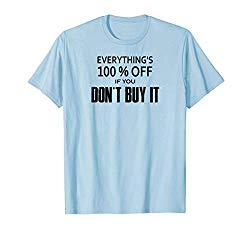


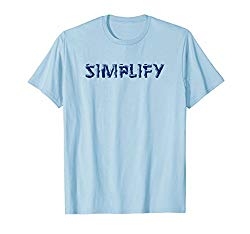
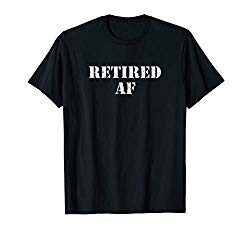


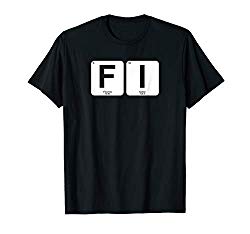
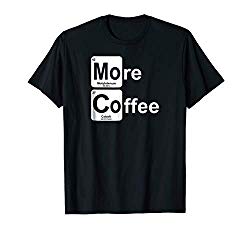

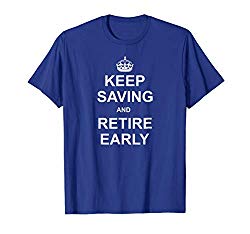
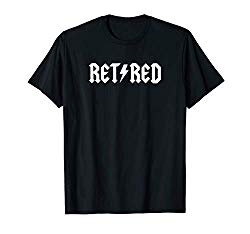
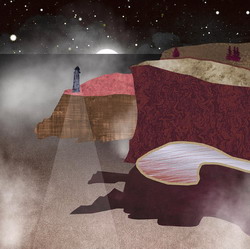



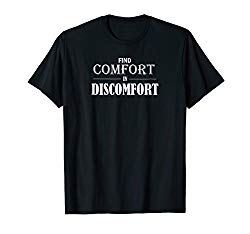
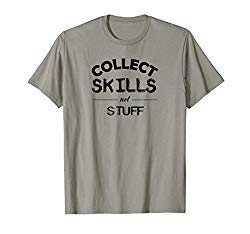
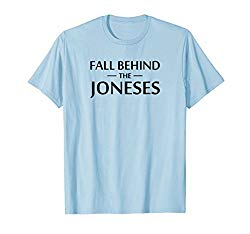

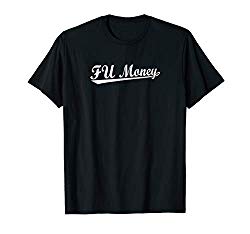
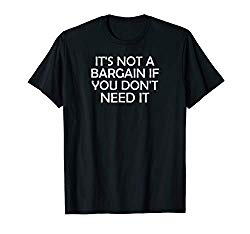
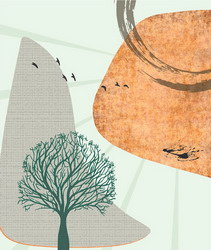

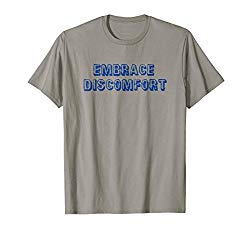
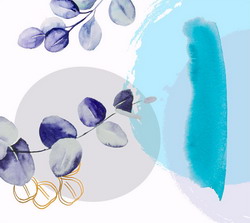











Excellent discussion on how we are always chasing that dopamine high but with each hit it makes the next one harder to achieve.
Thanks a lot Doc!
I would disagree with the conclusion. Introducing pain is just looking for a dopamine rush in the other direction. The dopamine/ depression link is probably accurate, but thinking that pain is a solution is probably a warped search for the justification of exercise.
You could be right, and as brain science and overall medical science progresses hopefully we’ll have a better picture. But the overall benefits of exercise are undisputable. And there is plenty of biological proof that things like cold showers or sauna help recycle cell mitochondria and increase longevity – all of it independent of dopamine and the motivations behind the pain/pleasure balance.
Is it really dopamine that is produced when exercising or adrenaline? That may be a minor point compared the one you’re making. Anyway, exercising can be just as addictive as any drug. It’s conquering the “addictive personality” that is hard. Many addicts simply trade one addiction for another that is more “socially acceptable.” Everything in moderation, I say.
Exercise produces dopamine for sure as well as a host of other things that are god for us. Adrenaline is produced by stress but has a complex interaction with physical activity because exercise can cause stress too. Exercise is a wonder drug. And yes it can be addictive of course, as anything can.
Humans are terrible at understanding the difference between wanting and liking. We assume the more we want something, the more happiness it will bring us – but there is little connection there. Biologically, those two pathways (dopamine and serotonin) are largely separate. You nailed it, Dave – we’re wired for short term thinking. When it comes to medium and long term health, contentment, and financial success, we need to ditch our instincts and adopt evidence-based habits.
Humans are terrible at lots of things, like interacting with other humans on social media, haha. I like how you ended your comment, we need more evidence-based habits. Well said Matt!
my dad used to tell me “you’ve had ti too easy for too long.” he was right. the struggle is golden.
Old school tough dads were always right, and they drank Stroh’s and Schlitz so there’s that.
Great post. I’m going to buy that book. I think about this a lot. The biggest happiness boosters I’ve ever had have had to do with kicking dopamine habits, whether Facebook, junk food, or shopping – things that gave a temporary rush but only made me unhappy overall. But I do need to introduce more challenges and hard things, as I’ve gotten complacent on that front, so this is a great reminder. Marathons, studying my tail off, moving to new places, not buying things I want… I need to get back on that train and find some new challenges. It’s no coincidence that the happiest and proudest moments of my life have also been the results of lots of pain!
I agree, it’s easier to kick the dopamine rushes than to do the hard painful things for most. But I also think they feed on each other as Dr. Lembke discussed, so there’s kind of a synergistic relationship. “It’s no coincidence that the happiest and proudest moments of my life have also been the results of lots of pain!” – SAME HERE!
I agree that introducing some struggle and hardship into one’s life leads to good outcomes. However I draw the line at pain. I competed in several sports as a teen and very much bought into the motto of ‘no pain, no gain’. But guess what? The pain was my body’s way of telling me I was injuring myself. Fast forward to now and those micro-injuries, which I didn’t even blink at as a youth and sure as hell didn’t slow down because I was taught to “push through the pain”, are now biting me HARD. I still practise introducing struggle and hardship into daily life – it’s super easy when you live in North America and don’t own a car – but my new motto is “gain with no pain”. Will it take longer to reach goals? Sure. But I equate it to investing; do you buy the stock/darling fund that hits it out of the park or do you add regularly to an index fund and give compounding time to do it’s thing?
So I agree with you but I think you’re defining pain different than Dr. Lembke and me. If you’re running a race and all of a sudden you twist your ankle on a curb and it hurts bad, you should stop. It’s not smart to work through that pain, that’s an injury that will get worse if you run through it. But just running a 5k race and going your hardest hurts. It’s the semantics of the word “pain”. When you’re running a race and in what we call the ‘pain cave’, it doesn’t mean you’re injuring yourself, that’s not good and I agree you should never strive for that or run through it. But you are in what can be described as pain. Others may say it’s just a high degree of discomfort. But that’s the pain Dr. Lembke is talking about. Getting in an ice bath or jumping in a cold river is kind of painful, but it’s good for you. So when I say “no pain no gain”, I mean that the workout has to be hard to make it impactful. I do not seek those micro-injuries that you mentioned which I agree are a sign to tone it back.
Any pain you feel from pushing limits in exercise is actually the tearing of muscle (yes, a micro injury). The commenter is correct. You’re redifining pain for your purposes – and incorrectly. You should become a politician…
I disagree Phil, again it comes down to how you consider the word ‘pain’. When I’m running fast I consider that pain, and while technically at the muscle fiber level you could say that damage is being done, but that’s the whole point. You could also say that about carrying a heavy grocery bag up a few flights of stairs. So by your definition you’re committing micro injuries to yourself all the time, and if that’s how you wanna define it then that’s what suits you.
And since walking is exercise and technically makes micro-tears, by your definition we’re hurting ourselves even on a walk.
When it comes to exercise I think of it as discomfort vs pain, and consider both the mental and physical. It’s much more comfortable to stay inside on the couch. Getting out for my walk when it was 27 degrees (F) yielded an amazing sunset. I’m in no rush to move to Alaska, but the fresh air and getting moving felt great.
Great point, there is pure mental discomfort out there too, like for most people that means sitting in an empty room with no stimuli and faced with their own thoughts. I admit that’s very uncomfortable for me as well
Awesome post, Dave. I’ve read a pretty good number of posts on pain (or self-deprivation) vs. the hedonic treadmill, but this is my favorite so far. It all makes a lot of sense. I know from my own experience that my happiest times, those when my overall well-being is at its peak, are when I’ve been able to maintain a healthy regimen of exercise and healthy eating for a lengthy period of time. It’s when I either get too busy or too mentally weak to maintain that healthy lifestyle (which involves a level of pain and self-deprivation, of course) that things go downhill physically and mentally. Now I have a term to associate with it: homeostasis, and the cure, hormesis. Thanks for the excellent post!
Thanks so much Brian for the compliment and I’m stoked that the post resonated with you. I too am happiest when I’m working out and eating healthy and these days I rarely fall off that wagon. I just won’t allow myself to, once you realize how good you can feel, you never want to go back. Good luck going forward and keep at it!
This could be one of the most important posts you’ve ever created Dave! Having the willpower to turn off the dopamine in today’s modern world is rare indeed. Very few people are wired to choose pain or even a little discomfort in broad aspects of their lives.
I’ve definitely seen people do it in sports, but ultimately there’s the endorphin hit at the end too. The so-called “runner’s high”.
Ask them to run a marathon and they’ll say “Ok, sure!” But ask them to disconnect the data plan from their phone and they’ll tell you “When hell freezes over.”
Addiction is real and all around us.
Wow thanks Tako! And get this – compared to most of my posts it bombed! Pageviews were very low for this one and I think it’s ‘cuz people just don’t wanna hear it, haha.
One of the best AF articles of all time! Wow! Really well done. Intrigued by the notion of hormesis and totally agree with the “most people could do with more pain in their lives” quote. Reminds me of my 12-mile barefoot walk last week after which my knee was throbbing, my toes swollen and just totally wiped and I my primary thought was “Damn, that felt so good to do!”
You and Tako both loved this post but as I told him it hasn’t done well compared to most of my posts. Maybe it’s just the title, I dunno. I suck at titles and refuse to do a “5 ways dopamine affects your finances” thing like the other sheeple, haha. As for a 12 mile barefoot walk… that just hurts reading it. Dang dude, hardcore!
Exercise is great for health and weight. It also keeps the mind clear and ups motivation.
All true, amen to that!